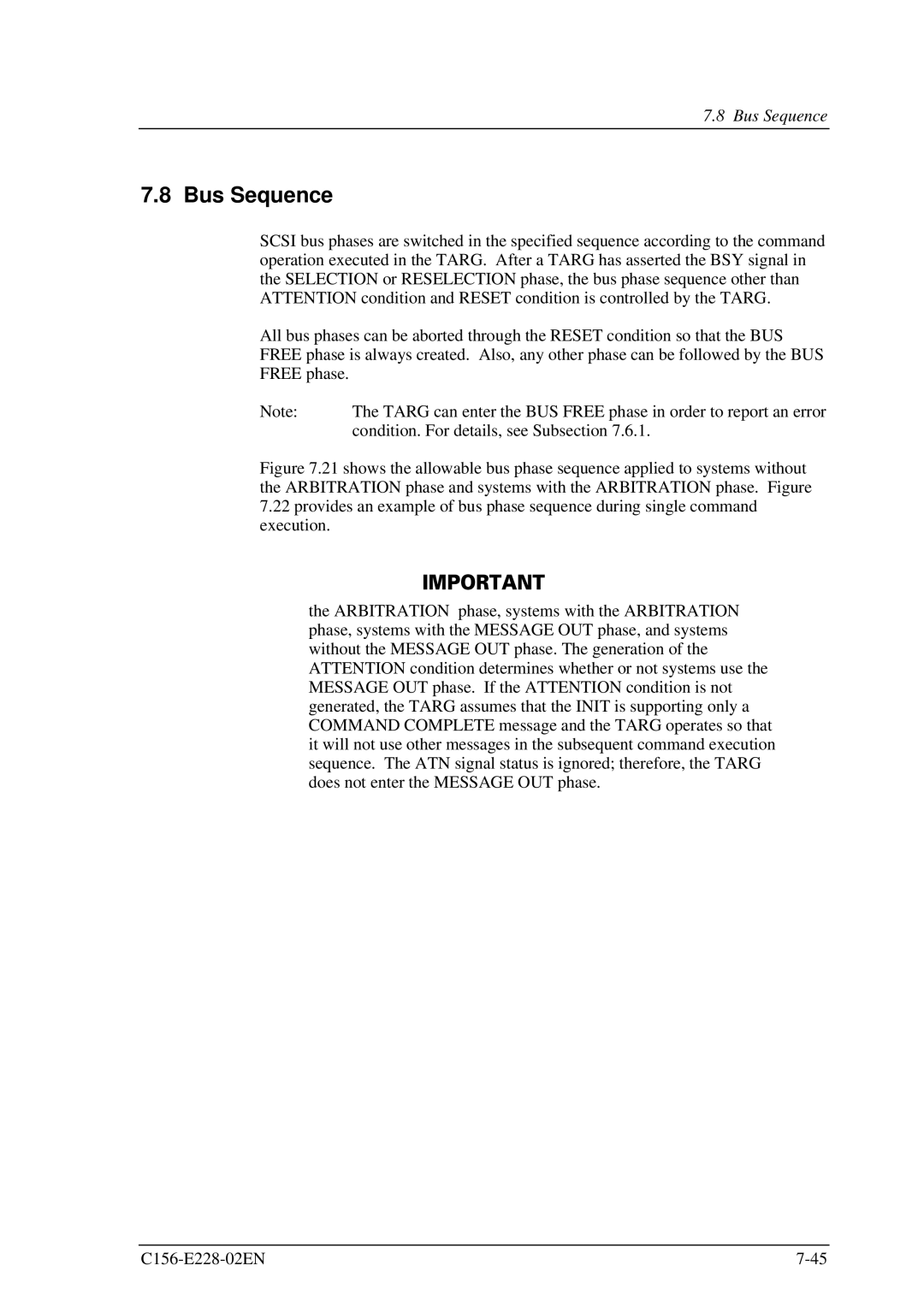
7.8 Bus Sequence
7.8 Bus Sequence
SCSI bus phases are switched in the specified sequence according to the command operation executed in the TARG. After a TARG has asserted the BSY signal in the SELECTION or RESELECTION phase, the bus phase sequence other than ATTENTION condition and RESET condition is controlled by the TARG.
All bus phases can be aborted through the RESET condition so that the BUS FREE phase is always created. Also, any other phase can be followed by the BUS FREE phase.
Note: | The TARG can enter the BUS FREE phase in order to report an error |
| condition. For details, see Subsection 7.6.1. |
Figure 7.21 shows the allowable bus phase sequence applied to systems without the ARBITRATION phase and systems with the ARBITRATION phase. Figure
7.22provides an example of bus phase sequence during single command execution.
the ARBITRATION phase, systems with the ARBITRATION phase, systems with the MESSAGE OUT phase, and systems without the MESSAGE OUT phase. The generation of the ATTENTION condition determines whether or not systems use the MESSAGE OUT phase. If the ATTENTION condition is not generated, the TARG assumes that the INIT is supporting only a COMMAND COMPLETE message and the TARG operates so that it will not use other messages in the subsequent command execution sequence. The ATN signal status is ignored; therefore, the TARG does not enter the MESSAGE OUT phase.
|
